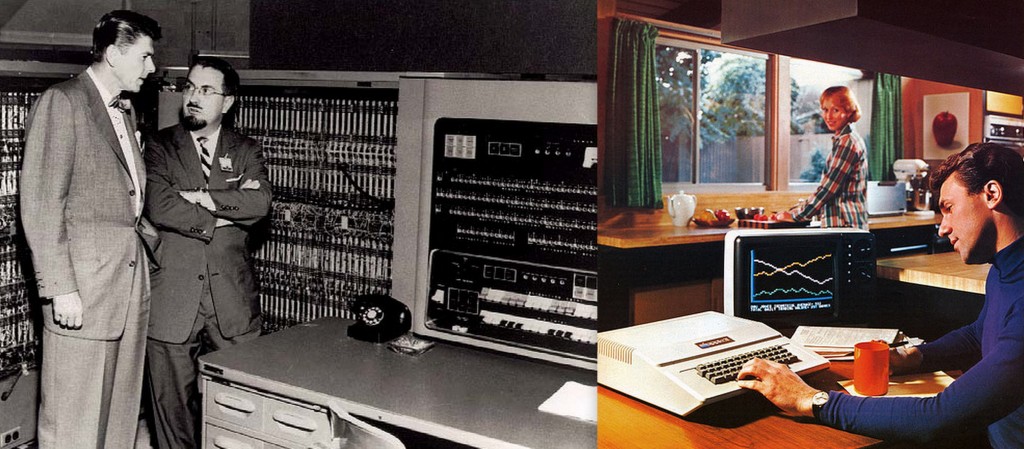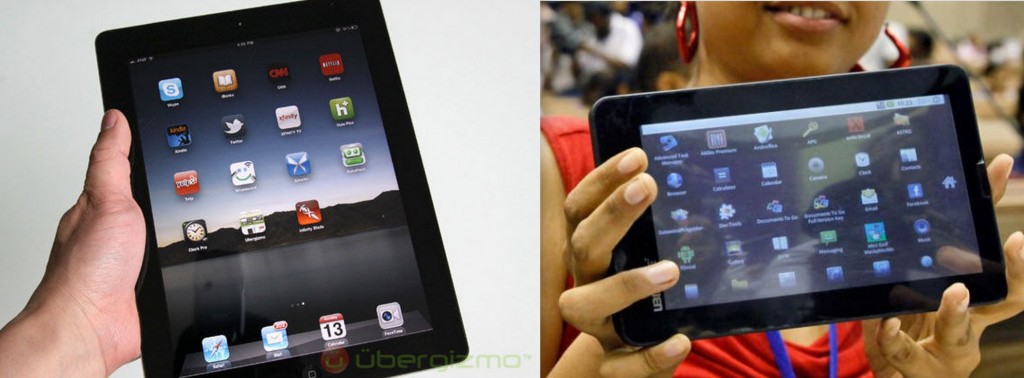Seoul Digital Forum, May 22, 2012
Business leaders today spend all their time trying to serve the richest 10% of the world’s customers. We need a revolution in business thinking to create products and services for the other 90%, not because it is the moral thing to do, but because there are vast new profitable markets awaiting the brave companies willing to create ruthlessly affordable new products serving the world’s 2.6 billion bypassed customers who live on less than $2 a day. The Appropriate Technology Movement, which showed such great initial promise, died prematurely because it was peopled by tinkerers instead of hard-headed entrepreneurs.
Henry Ford, Akio Morita, and Steve Jobs transformed business in the twentieth century by creating radical breakthroughs in two key areas: affordability, and miniaturization. Ford built a lighter, smaller car for $500 that armies of factory workers could afford to buy.

At a time when computers cost a million dollars and filled a whole room, Jobs and Wozniak created a computer that a college student could afford, and that was small enough to sit on his desk.

Apple PCs were classy and expensive. Apple lost its dominant position in the PC market it created to more affordable IBMs and a rapidly growing army of other PC-clones. After Henry Ford’s breakthrough, Detroit moved up-market with high-margin, expensive, aspirational Lincolns and Cadillacs, and then was brought to its knees by Japanese imports, which were smaller, cheaper, and more fuel efficient.
The digital revolution is following the same path, and risks facing the same do-or-die crossroads as General Motors because of it. Microsoft serves the top 10%, and leaves serving poor customers to the Gates Foundation. The One Laptop per Child movement serves children from middle-class families in developing countries, where there are a billion potential customers whose ability to use computers is constrained because they can’t read and write. Iphones and iPads are only available to the rich. But the future of digital technology is in services made possible by radically affordable hardware. Cell phones are already providing market information for small farmers, and access to mass markets for savings and credit for the poor.

There is a misplaced perception that the marketplace serving bottom of the pyramid customers requires products that work poorly, break quickly, and look cheap, and that high quality products and services can only be given away as charity. Nothing could be further from the truth. Products that are attractive to poor customers must indeed be affordable, but they also need to work well and look good. Poor customers are, if anything, more aspirational than the rich!
The $35 Aakash tablet computer can provide an interesting counterpoint to the western world’s fascination with cool terabyte performance. To the 40% of the world’s customers who live on less than $2 a day, the trade-offs to reach affordability are not onerous, and they open up access to vast new markets in education, financial services, and entertainment.

Can the design genius of Steve Jobs and Apple be harnessed to create a $15 iPad that would create revolutionary transformative markets serving the world’s 3 billion most bypassed customers? I sincerely hope so. Businesses that don’t learn quickly and effectively how to compete profitably at scale serving bottom of the pyramid customers risk going out of business in much the same way that Detroit was overtaken by Japanese imports.
I will be speaking on this topic at the Seoul Digital Forum on May 22. A video of my presentation and panel discussion will be available after the event.
Would you like Paul to Speak at your event?
Please contact Paul’s speaking agent, Larry Leson . larry@lesonagency.com . 609-235-5037


Mr Polak, this is clear and convincing. I do have a big concern left however. A lot of the reason we have so many living in deprivation now is that our global marketplace outsources poverty by paying wages to workers that would not support them in the communities that buy the products; in the process it outsources the pollution and energy requirements to the cheapest suppliers – those least able to deal with these problems; and also because it imports the materials and energy that it needs locally from the cheapest source, those least able to protect themselves from damage. The wealthy nations say, “If every nation gets ‘developed’ like us then we can end poverty”, but in fact if every nation lived like the U.S. then we’d need something like 4 Earths to provide goods for us, and I guess we’d need to find a couple of extraterrestrial civilizations to occupy at least two of them since there wouldn’t be any Earth nation left to exploit. So, when i see these cheap plastic products, i think “plastic can be radically affordable, durable and possibly even made with renewable materials, but the catastrophic outsourcing model is the main thing we are exporting and that is what creates the wealth gap.” I think an “appropriate technology” path to ending poverty begins with self-reliant local marketplaces that develop and protect all of their own resources, otherwise we are racing to the cliff.
Paul.. Thank you for writing a blog talking about importance of quality and aesthetics in the market for poor…I always get questioned on how are these simple devices “technology”.. I am so sad by the ignorance of most people who do not think appropriate designs for poor actually constitute technology as well.. talking about quality and looks.. most business people ask us to take the just pouch of our Clean Birth Kit to be able to make it even more cheaper whereas all our customers want that.. they love it.. I have pasted a testimonial from a midwife in Malawi to talk to the importance of quality…
“It never occurred to women of Mikundi , women of the very rural of Malawi, that one day they could use these neatly and hygienically packed kits. Never ever did they expect or dream of that happening in their life, but here it has happened. The AYZH kits come with a purse for them to take home after delivery; this brings some kind of esteem to them as they walk home with the fancy purse in their hands. “
Thank you for the short story I enjoyed that.
Countries collapse because population consume more than they produce – It is NOT sustainable to sell to the BOP – To optimize comes after creation or production – Mobile phones do not produce. “Ford built a lighter, smaller car for $500 that armies of factory workers could afford to buy” Creating employment for his client – @moladi we create employment with shelter for our client – Back2Basic Maslow’s Food and Shelter – Teach Fundamental skills to sustain self
Those of us who have read Paul Polak’s book, Out of Poverty, What Works When Traditional Approaches Fail believe that your perspective in the elementary form could be right, but as you learn more from Paul’s book you will find there are ways around this concern and how you can go about creating those solutions. I hope you will take a moment to read the book.
Thanks,
Kathryn, as near as I can tell, Paul is saying here that business profit is the driving force for international economic development up from poverty, and that the business winners are those whom produce the highest quality goods at the lowest prices; and that in the poorest quadrant of the market it will be through economy-of-scale in production that the winners succeed. If we follow the logic of his argument then the winners will be the businesses that constrain their costs by outsourcing poverty and pollution to find the lowest wages and weakest protections, which is an unsustainable path for people and planet (as I describe in my earlier comment). I’ve read the book you mention, and I’m wondering if you would simply tell us Paul’s solution to this criticism within the model he endorses, if there is one. I say that the path Paul describes created the poverty and that an “appropriate technology” path to ending poverty begins with self-reliant local marketplaces that develop and protect all of their own local human and natural resources, otherwise we are racing to the cliff.